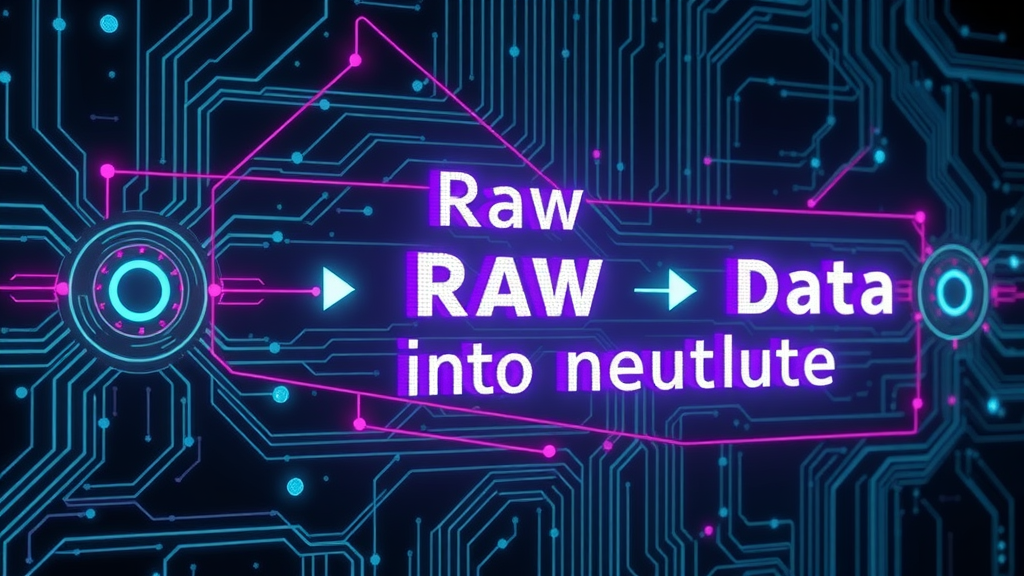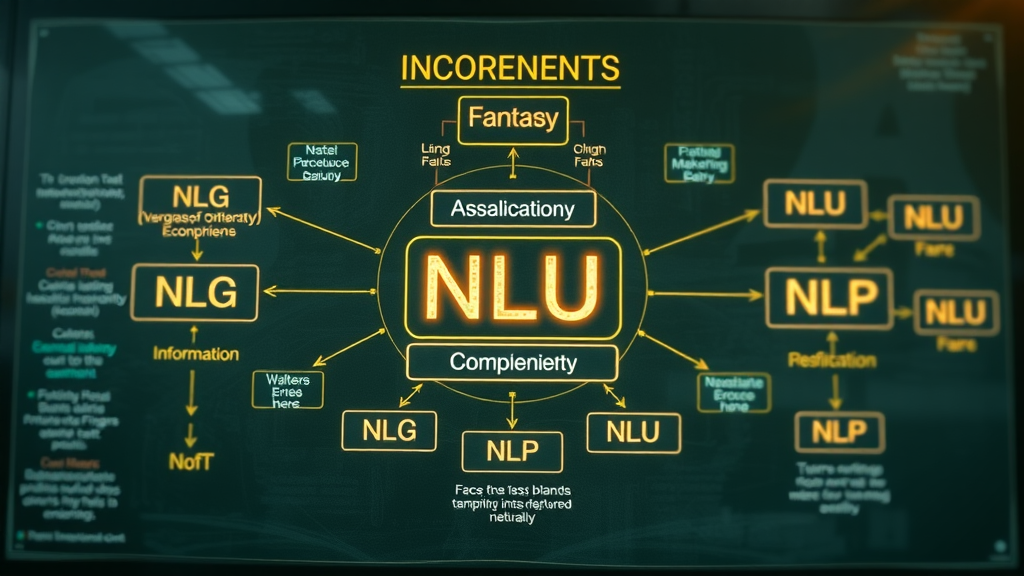
Did you know that over 70% of digital content could soon be generated by artificial intelligence? From headlines to help desks, the emergence of natural language generation (NLG) is not just reshaping writing—it's redefining how we communicate, automate, and inform across every industry. In this guide, you'll uncover the inner workings of NLG systems, learn practical ways to harness these tools for effortless writing, and find out how the next generation of language generation will impact your professional world. Let’s unlock the secrets together!
Why Natural Language Generation Is Transforming Writing: Unmasking the Revolutionary Impact
The advent of natural language generation marks a pivotal moment in content creation. Once, organizations dedicated countless hours and resources to drafting consistent articles, product descriptions, or reports. Now, NLG technology is changing the game by automating text generation processes with unprecedented accuracy. Businesses, educators, and creatives employ language generation models to effortlessly produce timely, informative, and audience-focused content—freeing human talent for more strategic endeavors.
At its core, NLG technology processes data and insights, then transforms them into compelling text for any target audience. Imagine scaling your content output tenfold while maintaining quality and tone. No more isolated human writers struggling to keep up with content demands—NLG enables the creation of everything from personalized emails to detailed financial summaries in seconds. This shift doesn’t just save time—it unlocks new creative possibilities and broadens access to professional-grade writing.
A Startling Statistic: The Rise of AI-Driven Language Generation
According to recent studies, over 40% of businesses now implement some form of language generation within their operations, and the number is climbing rapidly. As developments in artificial intelligence accelerate, NLG systems are producing billions of words each day—from dynamic news updates to patient health summaries. This staggering scale demonstrates the transformative impact of modern text generation on society and business alike. The question is no longer if you’ll encounter language generation, but how you will leverage its power for your own effortless writing .
-
Scalability and speed
-
Consistency in tone and quality
-
Enhanced language understanding
-
Effortless text generation for various domains
How Natural Language Generation Works: Understanding the Core Principles

Natural language generation operates at the intersection of data science and linguistics . The NLG process starts by analyzing structured data —such as statistics, records, or tables—and, using advanced algorithms and language models, translates this information into human language . The resulting narrative isn’t just correct grammatically; it mimics tone, style, and context as a skilled writer would, adjusting for domain-specific nuances.
Behind this magic is a blend of machine learning , deep learning , and rules-driven template techniques that equip NLG systems to “understand” the intent of both the content creator and the end user. Through training on large datasets, NLG models learn to generate natural language that is relatable, informative, and engaging. Whether you’re working in finance or healthcare, these fundamentals remain essential for producing clear, accurate, and relevant text generation output.
Defining Natural Language Generation: From Data to Narrative
Natural language generation is the automated process through which structured or unstructured information is converted into written or spoken language. Unlike basic content templates, modern NLG systems learn from vast data sets to produce original sentences, insightful summaries, or even creative news articles. The core goal is to deliver content that feels authentically human—even though every word originates from algorithms and training data .
This process differs from mere data display; it actively interprets the context and intended message , assembling coherent and relevant narratives from complex information. For example, a financial dashboard may hold thousands of figures; with NLG, those figures become a digestible monthly performance report for executives—no manual intervention needed.
The Distinction Between NLG, NLU, and NLP: Breaking Down Language Processing
It’s crucial to distinguish between three closely related fields: natural language generation (NLG), natural language understanding (NLU), and natural language processing (NLP) . While NLG is about creating text from data, NLU focuses on comprehending meaning in existing language, and NLP is the broader science of managing language in computational settings—whether that’s parsing, sentiment analysis, or translation. Each plays a unique but interconnected role in the world of AI-powered communication.
For instance, NLU enables systems to understand a customer’s query (“What’s my account balance?”), NLG generates the appropriate response (“Your account balance is $1,234”), and NLP encompasses both actions and more, including recognizing intent, extracting entities, or converting speech to text. Modern applications frequently combine all three for a seamless user experience across chatbots, voice assistants, and more.
|
|
|
|
Comparative Overview: Natural Language Generation vs. Understanding vs. Processing |
|
Capability |
NLG |
NLU |
NLP |
|---|---|---|---|
|
Description |
Generates human-like text from data |
Understands and interprets language |
Processes, parses, and manipulates language |
|
Main Function |
Text Generation |
Language Understanding |
Text Analysis & Processing |
|
Examples |
AI report writing, chatbots |
Intent detection, sentiment analysis |
Machine translation, speech recognition |

Technological Foundations: NLG Systems, Machine Learning, and Deep Learning
Today’s NLG systems owe their capabilities to leaps in machine learning and deep learning . Classic techniques involved static templates—think “if X, then say Y.” Modern approaches—using neural networks —empower systems to “read between the lines” of vast data troves and learn how to generate natural , audience-ready narratives. Data labeling, training data selection, and continuous feedback loops are critical for refining these algorithms.
Deep learning models (such as transformers like GPT) can handle enormous contextual dependencies, enabling them to produce paragraphs of coherent, insightful text that previously demanded direct human authorship. Every final output reflects not only the logic of the underlying model but also its exposure to proper data, domain-specific knowledge bases, and real-world feedback.
Essential Components of a Powerful NLG System
To build a truly robust NLG system , several architectural elements must work in harmony. First, a reliable mechanism for data collection ensures the system is learning from the most relevant, up-to-date, and domain-specific training data. Next, through data annotation , context and meaning are tagged to help the system “understand” nuanced human language use. Then, rigorous data preprocessing —removing redundancies, correcting inconsistencies, and merging sources—guarantees smooth operation during the language generation phase.
In addition, the strength of an NLG system hinges on its model architecture . Using advanced methods in machine learning and deep learning, the system refines its ability to correctly interpret data intent, choose the right vocabulary, and orchestrate clear sentence structures. Experts also recommend iterative testing (and re-testing) to ensure output meets industry standards for fluency, relevance, and creativity—especially important for domains where errors in language could cause confusion or noncompliance.
Core Architectural Elements of NLG Systems
The blueprint for successful NLG systems will include a pipeline of modules: input data ingestion, content planning, sentence structuring, and surface realization (final output). Each module addresses a specific step in the NLG process, from dataset parsing to the fluent delivery of appropriate, human-like language. By modularizing the workflow, engineers can fine-tune each stage—resulting in more accurate and domain-relevant generation that truly serves its intended purpose, whether in healthcare, finance, or customer service.
For example, some NLG architectures may leverage knowledge bases for fact-checking, while others use context-driven templates to ensure the right tone and detail for their specific application. The combination of these architectural elements allows NLG systems to provide users with content that is trustworthy, on-brand, and easily adjusted as organizational needs evolve.
Data Collection, Annotation, and Preprocessing in Language Generation
High-quality language generation begins with meticulous data collection and annotation. If training data is biased or incomplete, the final output may misrepresent facts or miss subtle language cues. Thorough preprocessing —filtering outliers, correcting errors, and aggregating relevant information—creates a solid foundation for building smarter, more reliable generation systems. Annotation, for instance, ensures that models learn context—what a word means in a specific setting, or how certain terms relate to others within a dataset.
The preprocessing phase also preps data for deep learning networks, which require clean, labeled, and balanced datasets. Labeled data can help the system distinguish between syntax, semantics, and intent—an essential skill for generating accurate, domain-specific text that resonates with its intended audience. Ultimately, the quality of upstream data tasks determines the value of the generated narrative, impacting everything from creative news writing to automated business reporting.
"Natural language generation is the silent force behind today’s seamless AI writing experiences."
Applications of Natural Language Generation: Revolutionizing Industries
From business intelligence to customer support, NLG technology is quietly powering a digital transformation. In enterprises, NLG systems convert rows of complex analytics into understandable executive summaries or personalized recommendations. In e-commerce, they generate thousands of unique product descriptions that boost SEO and increase conversions. Even in journalism, newsrooms employ NLG to draft breaking news updates and summarize events in real-time—expanding both reach and timeliness.
The role of language generation stretches beyond mere efficiency; it brings tailored, consistent, and always-on communication to every corner of our digital lives. With applications rapidly spreading across domains, organizations are reaping the benefits of improved accuracy, lower operational costs, and a sharper competitive edge in content-driven markets.
NLG Technology in Business: Automated Reporting, Summarization, and Personalized Content

Within the business realm, NLG technology is perhaps best known for automating routine but text-heavy tasks. Imagine deploying NLG to transform raw sales numbers into a monthly summary for upper management, or to create customized client proposals based on live analytics. Businesses are now leveraging language generation to produce data-driven newsletters, market reports, and compliance narratives—reducing human workloads and ensuring all communication remains consistent, timely, and accurate.
Customer-facing applications are also abundant; NLG systems can instantly generate text for order confirmations, FAQs, and tailored content for web or mobile experiences. By combining structured data with content rules, businesses are streamlining content creation and achieving scalability that manual authoring teams could never match. The result is not just efficiency, but also greater customer service and brand engagement.
NLG for Customer Engagement: Chatbots, Virtual Assistants, and Language Understanding
On the frontline of customer service , chatbots and voice assistants rely heavily on natural language generation to deliver conversational, human-like responses. These systems tap into NLG to ensure every customer receives personalized answers, helpful recommendations, and even empathetic follow-up—whether by chat, email, or phone. Virtual assistants use language understanding to interpret user intent, then draw on NLG to respond promptly, appropriately, and at scale.
This technology is critical for meeting digital expectations in sectors like banking, healthcare, and travel. NLG empowers conversational AI to not only process requests but also generate natural responses that foster customer loyalty and streamline support operations. By integrating robust machine learning and deep learning models, businesses maximize engagement, efficiency, and satisfaction at every interaction touchpoint.
-
Financial analytics
-
Healthcare documentation
-
E-commerce product descriptions
-
News and media

"With natural language generation, organizations can unlock a new level of communication efficiency." – AI Industry Leader
Natural Language Generation Versus Other Language Technologies
Understanding the unique value of natural language generation requires comparing it with adjacent technologies like natural language understanding and natural language processing . While they all contribute to smarter communications, their core competencies differ: one creates, another comprehends, and a third orchestrates the processes in-between. As AI evolves, these boundaries sometimes blur, making the synergy between NLG, NLU, and NLP even more critical for advanced applications.
NLG particularly shines when converting structured data into fluent narrative, whereas NLU is strongest in deriving meaning and intent from messy, real-world language like emails and support requests. By combining them in virtual agents or content recommendation engines, organizations can both anticipate user needs and respond instantly—all in natural, easy-to-read language.
Comparing Natural Language Generation and Natural Language Understanding

While natural language generation crafts text for communication, natural language understanding serves as the brain’s “listener,” interpreting user intent and extracting relevant facts from language input. In practical deployments, NLU may decipher what a customer asks in a chatbot interaction, while NLG composes a clear, on-brand reply. Pairing these technologies forms the backbone of conversational AI , delivering seamless dialogue in both directions—input comprehension and output articulation.
In summary, organizations looking to automate sophisticated customer engagement must invest in systems capable of both nuanced comprehension (NLU) and compelling expression (NLG). When linked by a robust language processing pipeline, these capabilities can generate the full spectrum of written or spoken interactions, meeting customer needs faster and with greater consistency.
How Does Language Processing Enable Advanced Text Generation?
At the heart of every advanced text generation engine lies a suite of language processing techniques. These include tokenization (breaking language into parts), parsing, semantic analysis, and context inference. Together, these techniques empower NLG to not just generate grammatically correct content, but to tailor messaging for specific audiences, align with cultural norms, and accurately surface facts from a sea of data. The combination of text analysis and smart generation is what sets AI-powered writing apart from traditional, hand-crafted scripts.
For content creators and businesses alike, the lines are clear: good language models understand the world around them; great language generation systems do something original with that understanding—producing text that informs, delights, and inspires action.
-
Personalized content at scale
-
Greater speed and accuracy vs. human authors
-
Automatic adaptation to style and context
-
Consistent quality across massive volumes
|
|
|
|
Strengths and Weaknesses: NLG vs. NLP vs. NLU |
|
Aspect |
NLG |
NLP |
NLU |
|---|---|---|---|
|
Strengths |
Generates diverse and fluent text, excellent for content creation |
Enables text parsing, analysis, overall workflow management |
Understands user intent and language meaning |
|
Weaknesses |
Can generate irrelevant output without proper training |
May struggle with ambiguity, slang, or nonstandard text |
Limited by complexity and nuance in language |
|
Ideal Use Cases |
Automated article and report writing, customer engagement |
Data mining, translation, sentiment analysis |
Intent analysis, information extraction |
FAQ: How is natural language generation different from natural language inference (NLI)?
Natural language generation (NLG) produces text from structured data or input, while natural language inference (NLI) is concerned with deducing relationships and logical connections between sentences. NLG writes new narratives or summaries, whereas NLI helps determine if one statement logically follows from another—supporting tasks like fact-checking or contradiction detection.
Best Practices for Implementing Natural Language Generation Systems
Successful deployment of an NLG system starts with defining clear business outcomes and aligning data sources with content needs. Follow the guidance of seasoned AI experts: invest heavily in high-quality, representative data sets, monitor results with reliable validation metrics, and never overlook the importance of continuous learning feedback loops. Build cross-functional teams—including data scientists, linguists, and domain experts—to maximize the accuracy, relevance, and adoption of your generation system.
Consider the user perspective early and often. Is your NLG output delivering real value to its readers? Are there checks to ensure compliance with company voice, accuracy, and regulatory guidelines? By applying best practices throughout the NLG process, organizations not only future-proof their content strategies but also encourage stakeholder trust and engagement across every audience touchpoint.
Designing Robust NLG Systems: Tips from the Top Experts
Leaders in NLG recommend modular, flexible designs so that changes to data or business logic won’t derail the entire system. This means creating distinct layers for planning, generation, and post-processing . Always include robust mechanisms for human review—especially in regulated industries like healthcare or finance—and stress-test your models on edge cases or highly nuanced language. The most effective NLG systems are those that can be easily adjusted, retrained, and improved as organizational requirements shift over time.
Experts also advocate for clear, well-documented quality benchmarks so every final output meets user expectations. Error analysis—reviewing mistakes or customer feedback—should feed directly into model updates. Regularly update training data to keep pace with evolving language use, business priorities, and regulatory shifts.
Leveraging Machine Learning and Deep Learning for Optimal Language Generation
Machine learning and deep learning are the engines driving the most effective NLG systems today. These algorithms allow generation systems to adapt organically to new domains, anticipate user needs, and generate text with more creativity and nuance. To get the most from these technologies, prioritize model explainability, transparency in training processes, and ongoing evaluation against real-world user interactions.
Embracing continual model training—incorporating the latest use cases, language shifts, and performance feedback—will enhance both short- and long-term results. As deep networks encounter larger and more diverse data sets, their capacity to generate relevant, insightful, and error-free narratives steadily improves. The result: a next-gen content creation platform that feels dynamic, responsive, and reliably on-message.
-
Data integrity
-
Model validation
-
Continuous improvement feedback loops
"Continuous learning is the cornerstone of effective natural language generation."
Future Trends and Innovations in Natural Language Generation

The future of natural language generation is being shaped by rapid advancements in pretrained language models , like OpenAI’s GPT series, and the integration of contextual generators that consider tone, intent, recent user behavior, and world facts. Emerging innovations are pushing NLG beyond structured templates into full-scale, conversational creativity—making it possible for machines to tell stories, craft poetry, or engage in long-form discussions with human-like coherence.
As NLG models grow in sophistication, their use cases multiply. Think real-time translation, multilingual content creation, emotionally responsive conversational agents, and even AI-powered creative writing tools. The ability to fine-tune language models on specialized data sets will open up new verticals—from medical diagnostics to real-time market commentary—where instant, tailored content makes a tangible, even life-saving, difference.
Emerging Developments: Pretrained Language Models, GPT, and Contextual Generators
Breakthroughs in deep learning have made pretrained language models like GPT, BERT, and T5 the backbone of state-of-the-art NLG solutions. These models, trained on billions of sentences, can be quickly adapted to specific industries or styles with minimal additional data—enabling brands to capture the subtleties of human language across every platform and device. The rise of contextual generators —which factor in conversation history and external context—brings us even closer to genuinely personal, empathic AI.
This trend is already accelerating the pace of digital transformation for content-centric businesses. With these technologies, organizations can quickly launch multilingual content campaigns, support global customer bases, and develop innovative products that were impossible just a few years ago.
The Expanding Role of Artificial Intelligence and Computational Linguistics
Artificial intelligence and computational linguistics are converging to make NLG both smarter and more adaptive. Advances in language models are helping AI to bridge the gap between the rules of language and its constantly evolving, lived reality. This means better grammar, clearer communication, and a more natural “feel” in generated text. Researchers in computational linguistics are working side by side with machine learning engineers to push boundaries in text coherence, context sensitivity, and cultural adaptability.
We can expect NLG to begin handling ambiguity, sarcasm, regional dialects, and even humor. As AI “learns” the real world, the content it generates will only become richer and more engaging, deepening connections between brands and audiences everywhere.
Predictions: What’s Next for Language Generation Technology
In the near future, we anticipate more human-centric NLG applications —systems able to reference specific user histories, emotional cues, and external events. Innovations will unlock next-generation accessibility tools, helping people with visual or cognitive impairments to access and create content as easily as anyone else. As ethical and regulatory frameworks mature, organizations will also enjoy new levels of confidence in deploying AI-powered language solutions at scale.
The NLG of tomorrow won’t just help us write better or faster—it will redefine what it means to “engage” in a digital world, giving rise to smarter automation, richer stories, and more productive collaboration between humans and machines.
"Artificial intelligence has only begun to reshape the landscape of language generation."
People Also Ask

What do you mean by natural language generation?
Natural language generation (NLG) refers to the automated process of producing written or spoken content that closely mimics human language. Using structured or unstructured data, NLG systems leverage algorithms to generate natural, fluent, and contextually relevant text for any purpose—from business reports to customer service chatbots.
What is the difference between NLP and NLU?
Natural language processing (NLP) is the scientific field focused on enabling computers to interpret, process, and manipulate language, including tasks like translation and speech recognition. Natural language understanding (NLU) is a subset of NLP, specializing in interpreting the intent, meaning, and sentiment of language input. NLP handles the mechanics; NLU delves into comprehension.
What is an example of NLG?
A common example of NLG is an AI-powered financial platform that automatically generates personalized portfolio summaries for investors based on their account data. Another is a news organization using NLG to produce instant, data-rich sports recaps from live match statistics.
What is the difference between NLP and NLI?
While NLP (natural language processing) involves the broad set of tools and techniques for handling language in computers, NLI (natural language inference) specifically concerns itself with determining if one statement logically follows, contradicts, or remains neutral relative to another. NLI is often used in tasks such as fact-checking, logical reasoning, and semantic analysis.
Frequently Asked Questions About Natural Language Generation
What industries benefit most from natural language generation?
Industries reaping the greatest benefits include finance, healthcare, e-commerce, media, telecommunications, and customer service. NLG helps automate complex reporting, personalized communication, medical charting, and even creative writing, freeing up human talent for higher-level problem solving.
How accurate is modern language generation?
Today’s leading NLG solutions can produce text with remarkable accuracy—often indistinguishable from human-written content when properly trained on quality data. However, output precision depends on domain-specific data quality, model tuning, and ongoing system refinement.
Can NLG systems be customized for unique business needs?
Absolutely. Modern NLG platforms are highly customizable, allowing organizations to tailor the models, data sources, and editorial rules to match industry regulations, audience expectations, and specific organizational voice.
What are the ethical considerations in deploying NLG solutions?
Key concerns include transparency about AI-generated content, bias mitigation, and ensuring that generated narratives are accurate and non-harmful. Ethics frameworks and oversight are critical for maintaining user trust, regulatory compliance, and social responsibility in AI-powered communication.
Making the Leap: Integrating Natural Language Generation Into Your Workflow for Effortless Writing
Embracing natural language generation transforms the writing process—delivering consistency, creativity, and scalability to organizations of any size. Begin by identifying where automation can support your goals (from reporting to content marketing), choose a robust NLG system aligned with your data sources, and set up continuous learning and feedback mechanisms to refine your strategies over time. Invite your teams to collaborate with AI—not as a replacement, but as a creative partner—and unlock a future of truly effortless writing.
Natural language generation (NLG) is revolutionizing content creation by automating the transformation of structured data into coherent, human-like text. This technology enables businesses to produce reports, product descriptions, and personalized communications efficiently, freeing up human resources for more strategic tasks.
For a comprehensive understanding of NLG, including its applications and methodologies, consider exploring IBM’s article titled “What is Natural Language Generation (NLG)?”. This resource delves into various NLG models, such as templates, rule-based systems, and advanced AI models like transformers, providing insights into how these technologies generate novel texts from training data and user inputs. ( ibm.com )
Additionally, the Wikipedia page on “Natural language generation” offers an in-depth overview of the field, covering its stages, applications, and evaluation methods. It discusses how NLG systems can generate textual summaries of databases and data sets, and their use in applications like chatbots and automated report generation. ( en.wikipedia.org )
If you’re serious about leveraging NLG for effortless writing, these resources will provide you with a solid foundation and practical insights into implementing this transformative technology.
 Add Row
Add Row  Add
Add 




Write A Comment